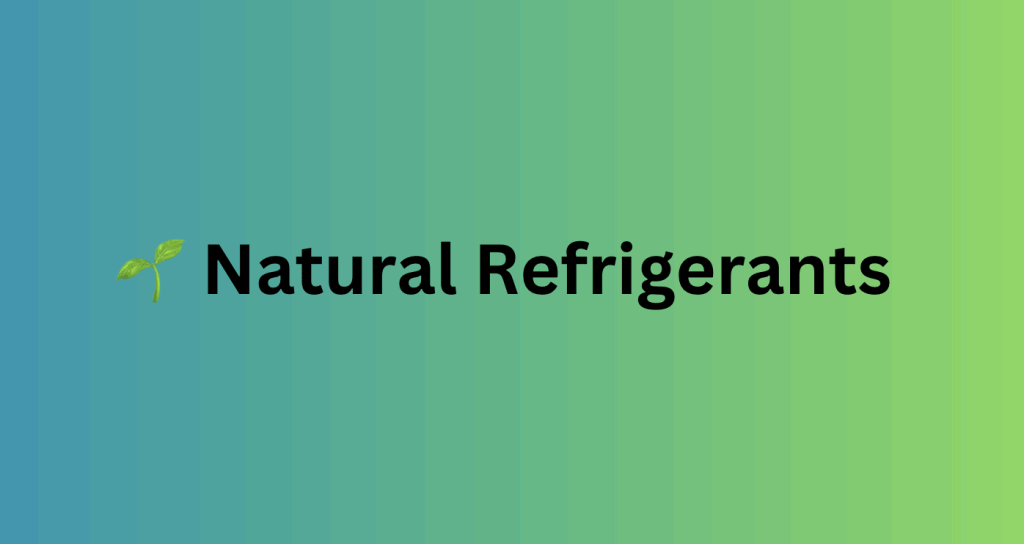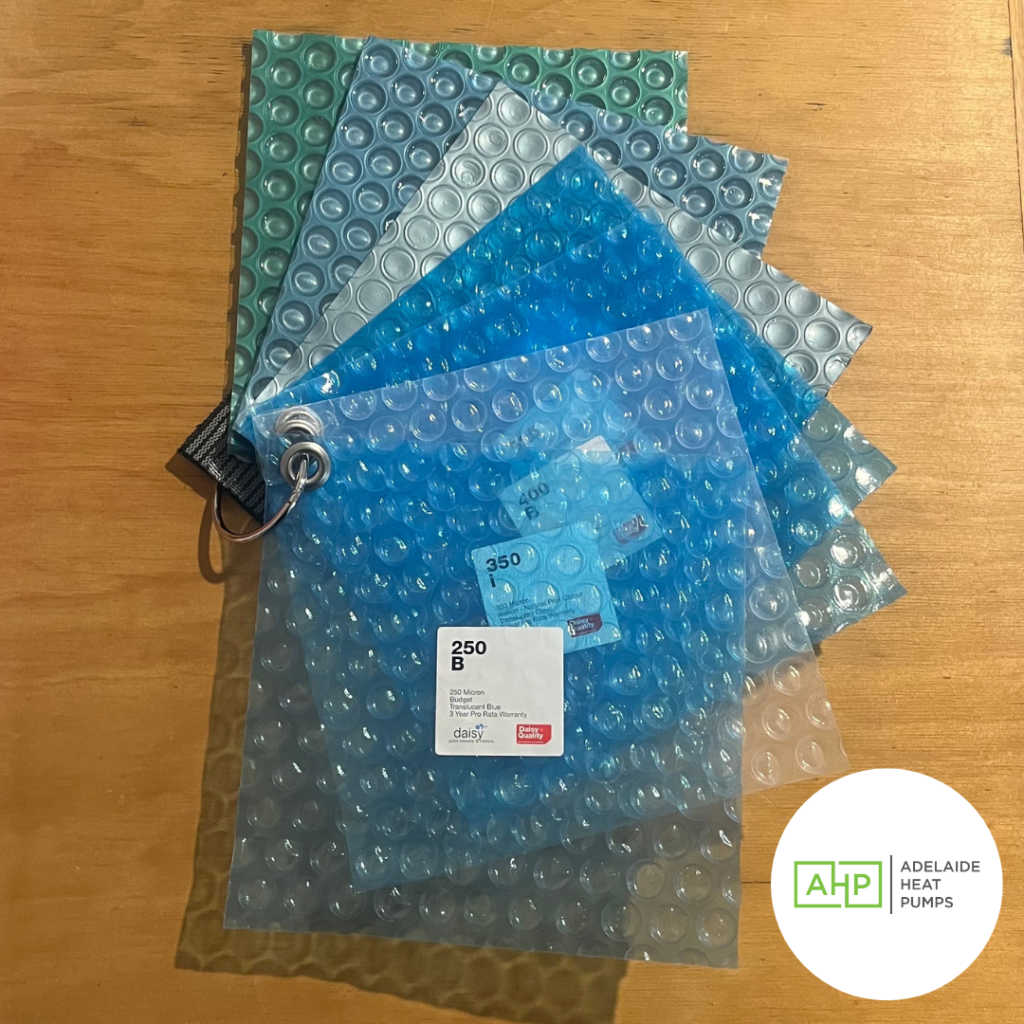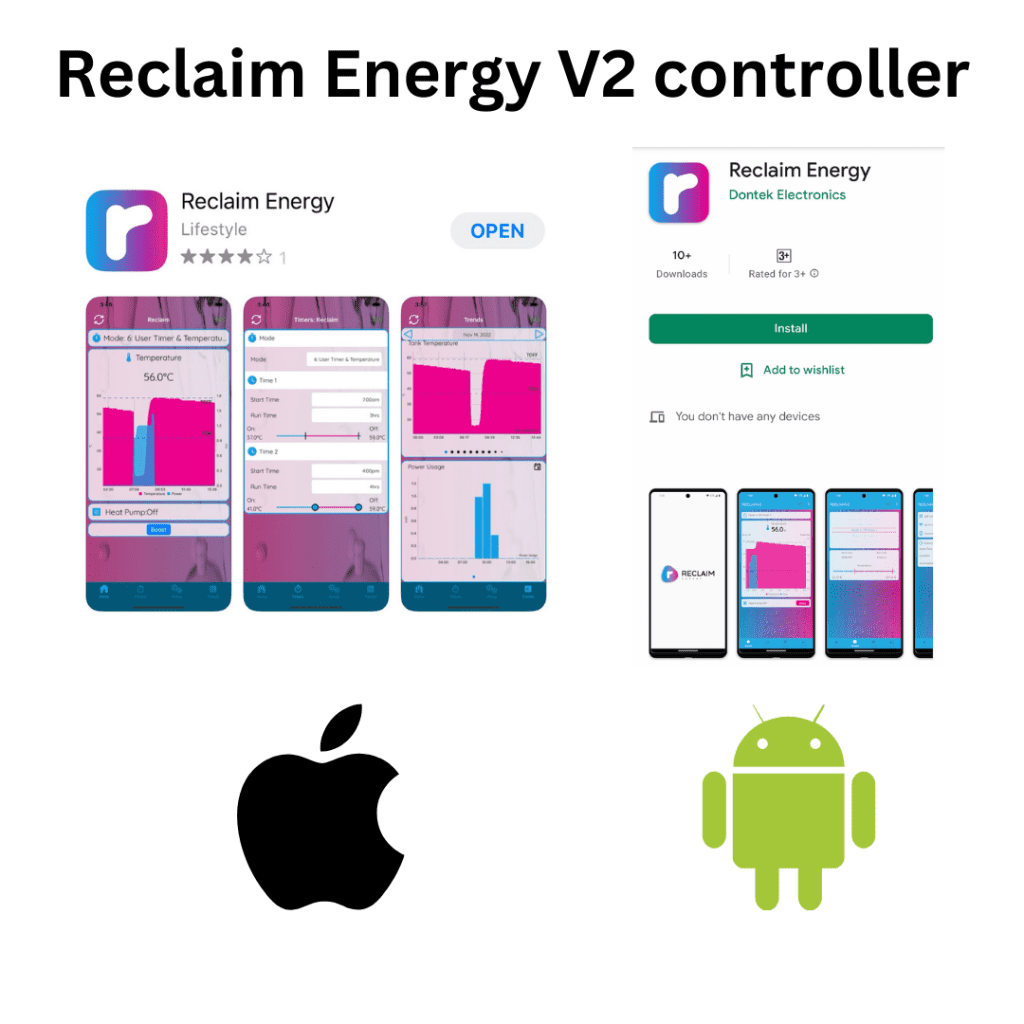What are natural refrigerants?
Natural refrigerants are substances that are used in refrigeration and air conditioning units to provide heating and cooling and hot water heat pump systems to heat the water , without harming the environment or contributing to global warming. They are called natural refrigerants because they are naturally occurring substances that are non-synthetic and non-toxic.
There are four main types of natural refrigerants:
Ammonia (NH3): Ammonia is a colourless gas with a pungent odour. It is used in industrial refrigeration systems and large-scale commercial refrigeration applications.
Carbon dioxide (CO2): Carbon dioxide is a colourless, odourless gas that is used in commercial and industrial refrigeration systems, as well as in some hot water heat pump systems like the Reclaim Energy and MHI Qton heat pumps.
Hydrocarbons (propane, butane, isobutane): Hydrocarbons are naturally occurring gases that are used in small refrigeration, air conditioning systems, hydronic heating and hot water heat pumps, such as those used in domestic or small commercial settings including our Apricus All in one hot water heat pumps.
Water: Water is used as a refrigerant in absorption refrigeration systems, which are typically used in large-scale industrial applications.
The use of natural refrigerants is gaining popularity as companies and governments seek to reduce their environmental impact and meet climate change targets. Natural refrigerants are more environmentally friendly than synthetic refrigerants, which are known to be potent greenhouse gases.
What is the GWP of refrigerant?
GWP stands for Global Warming Potential. It is a measure of how much heat a greenhouse gas traps in the atmosphere over a given time period, relative to the same amount of carbon dioxide (CO2). CO2 has a GWP of 1, by definition. The higher the GWP of a gas, the more potent it is as a greenhouse gas and the more it contributes to global warming. GWP is used as a metric to compare the impacts of different gases on the environment and is often used in the context of refrigerants and other industrial processes that emit greenhouse gases.
What is PFAS?
PFAS stands for Polyfluoroalkyl Substances. They are a group of man-made chemicals that have been used in a variety of industrial and consumer products, including non-stick cookware, food packaging, stain-resistant fabrics and carpets, firefighting foams, and some personal care products.
PFAS are persistent in the environment and do not break down easily, which means they can accumulate in the soil, water, and living organisms. Some studies have suggested that exposure to PFAS can lead to health problems such as high cholesterol, thyroid disease, decreased fertility, and some types of cancer.
Due to their persistence and potential health risks, there has been growing concern about PFAS in recent years. Many countries have begun to regulate or ban the use of certain types of PFAS in consumer products and industrial processes, and some have initiated cleanup efforts to remove PFAS from contaminated sites.
A number of manufactured chemical refrigerants contain PFAS.
Refrigerant GWP and PFAS
The chart below shows different refrigerant types with their GWP over 20 and 100 years and also if they are a PFAS issue.
There are still manufactures of hot water heat pumps in Australia providing units using HFC-134A and HFC-410A into the market even though these refrigerants are a big problem.
Please not Co2 is not listed on the below chart but being natural is has a GWP of 1 and has no PFAS.

What can I do?
Moving to a heat pump for your hot water can be a great way to reduce your carbon footprint and reduce energy costs in your home. If you are going to make the shift make sure to ask your supplier the following question, Do the heat pumps you supply utilise a natural refrigerant?
If the answer is no, our recommendation would be to move on a find one that does. Whilst most heat pumps will save you money on your hot water you don’t want to undo the good you do with other undying issues created by older refrigerants that will be difficult to deal with in future.
To make sure we are giving the best solutions now and into the future both of our hot water heat pump offerings utilise natural refrigerants, The first being the Reclaim Energy heat pump which uses Co2 and the Apricus All in one heat pump that uses R290.
Natural refrigerants are the future!
To live in a clean green energy efficient future we need to make sure we are shifting to the best solution available today. Due to the fact that natural refrigerants don’t create excess environmental issues they will be with us for many years to come. As seen recently from many media outlets and social media posts from ISH, the shift to heat pumps is massive with the shift to natural refrigerants taking centre stage. The next few years will see a big shift that will set us up for the future of natural refrigerants.





